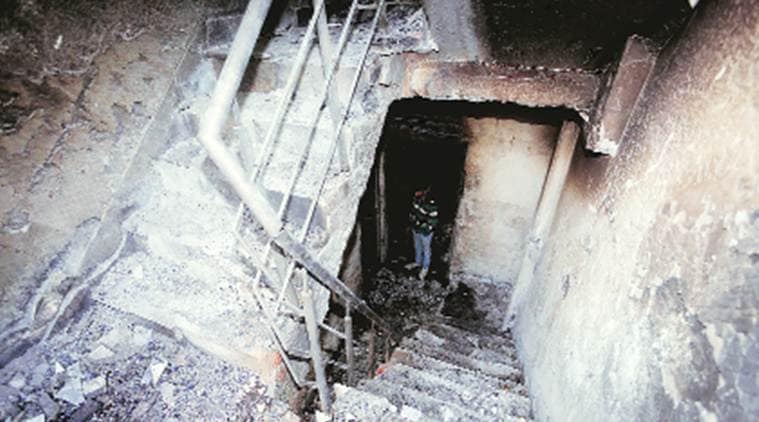 At a burnt home in Shiv Vihar on Saturday. (Photo: Amit Mehra)
At a burnt home in Shiv Vihar on Saturday. (Photo: Amit Mehra)
The objective is to “get life back on track” — spend some time at home, even if during the day; tidy up the premises; sweep the floors; put the furniture back on its feet.
The insistence of Delhi government officials as well as NGO workers that riot-hit families sheltered at relief camps should gradually prepare to return home appears to be a well-meaning one.
But for Nazreen, home was a sofa set, two beds, a TV, a refrigerator and a wash basin, “aayne ke saath (along with her mirror)”. Not a hollowed out space where memories float with wisps of acrid smoke.
“Aate waqt haath-paer kaanp rahe the (my hands and feet were shaking while coming here),” she says, pointing at an unpaved stretch, overflowing with sewage from an open gutter.
The narrow lane leads to her house at Ghonda’s Gujjar-dominated Garhi Mendu village, where arsonists burnt down several houses on February 25, forcing residents to take shelter at a community centre at Shri Ram Colony in Khajuri Khas.
While members of the community assisted the displaced families for the first three days, the Delhi government took charge on February 28. With the passing of a week, authorities have started nudging families to gather courage and return. At the relief camp, men and women have been housed on two different floors of the three-storey community centre, which comes under the East Delhi Municipal Corporation.
“Police are saying go spend the day at home and return to the camp at night. Both they and Delhi government are saying saaf-safai karo (go clean up). Jo jaan bacha li ab woh bhi gawa dein (our lives are the only thing that we managed to protect, now do we give that up as well?),” says Zarina, who moved to the village around 12 years ago from neighbouring Khajuri Khas.
Local social activist Chand Bi, who has been assisting the Delhi government in the relief efforts, says initially Muslims started living as tenants in the village, before going on to buy land available at a relatively cheaper cost.
In fact, many families, like that of Mohammed Shakir, continue to stay as tenants at homes owned by Gujjars. And for Shakir, a sewing worker at a Karol Bagh factory, that acted a shield on the day of the attack, rioters left after looting his home. They didn’t set it on fire.
“When I was returning home around 8 pm, I could see attackers were setting houses ablaze. I called up my Gujjar landlord, who rushed home, and the attackers realised it was not a Muslim property,” Shakir, who pays Rs 2,800 per month as rent, says.
Zarina, whose house was torched during the violence, says Muslim families fled the village as tension kept escalating, especially with the attack on the sole neighbourhood mosque on February 24.
“When we were told that our houses were being looted, set on fire, we kept calling the police, fire brigade. No one responded. I made at least 12 calls,” claims Shakir.